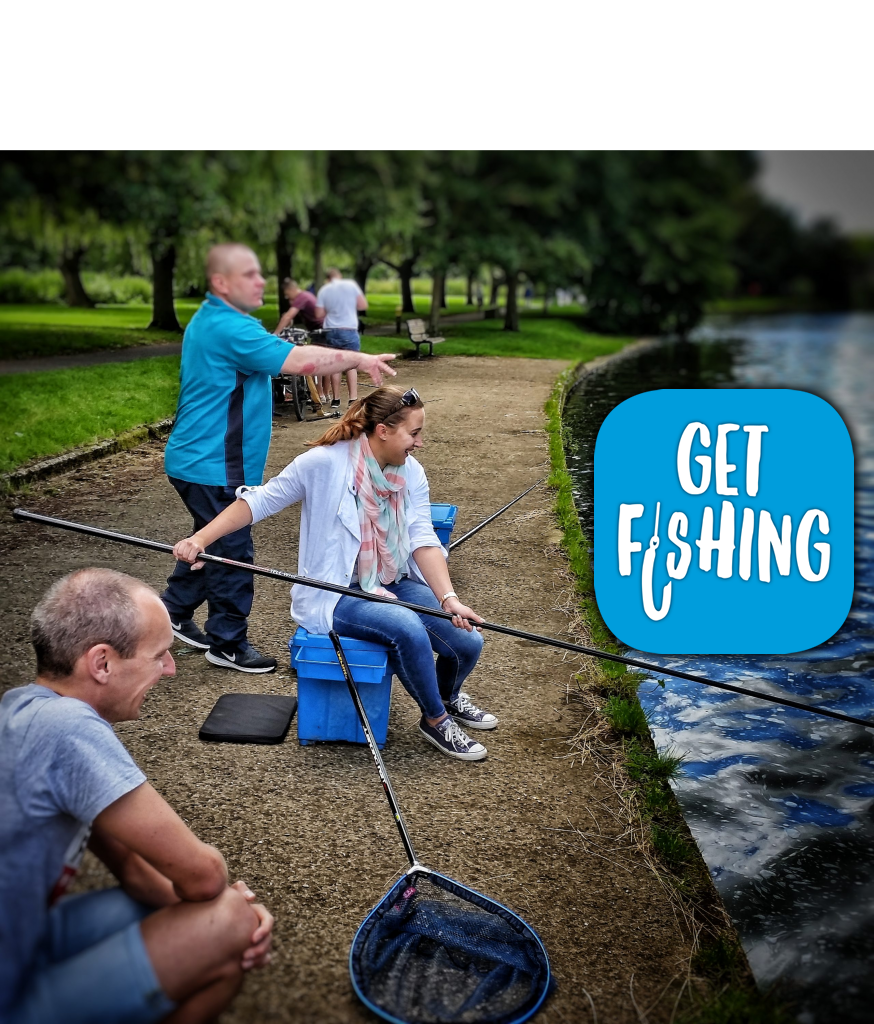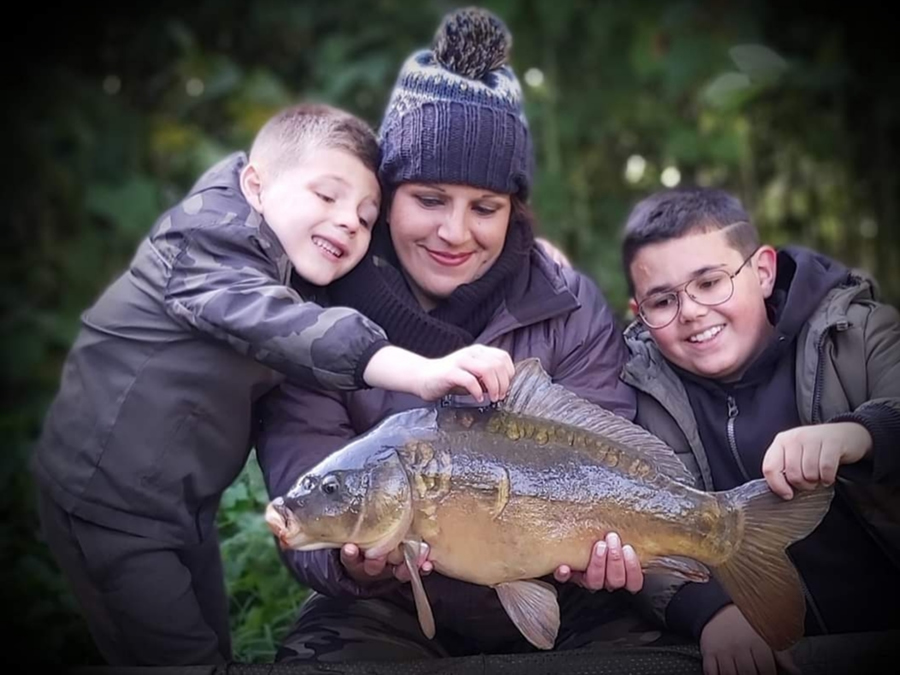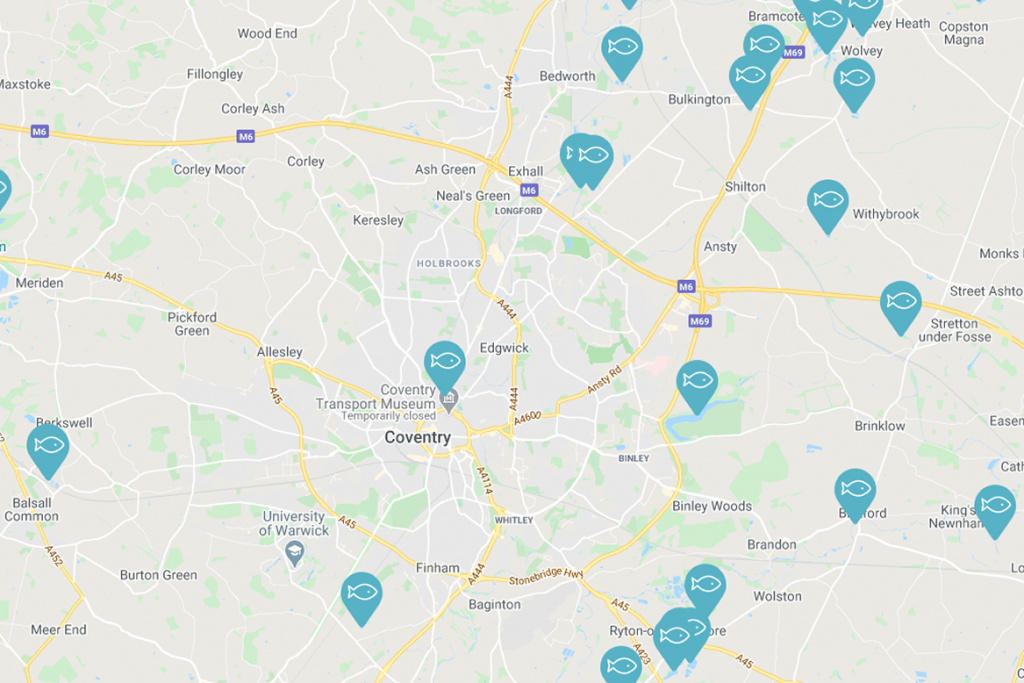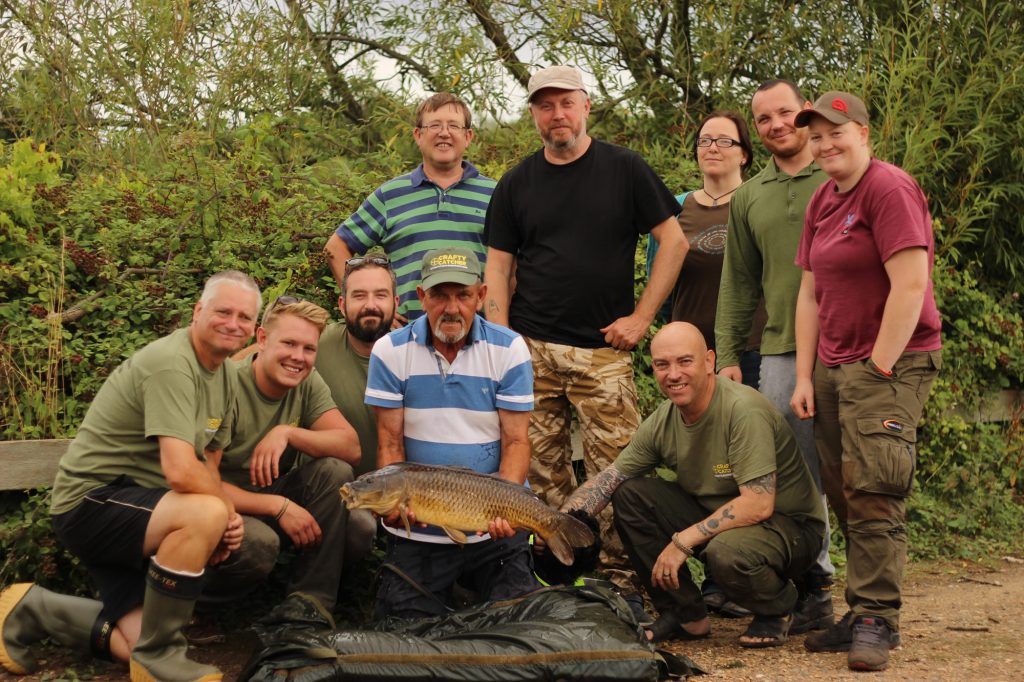Minimum Conservation Reference Sizes (MCRS)
The Angling Trust is deeply committed to the conservation of fish stocks. We believe that many anglers, whilst enjoying their sport and occasionally retaining fish for consumption, are keen to adopt a conservation-minded approach.
Minimum landing sizes are used worldwide to manage fish stocks. As a common-sense approach to conservation and an easy concept to understand (protecting immature fish) and apply when fishing, they have become particularly recognised by recreational anglers as an important conservation method for fish.
Historically, UK anglers must adhere to legally enforceable minimum sizes for various finfish, which have become known as Minimum Conservation Reference Sizes (MCRS).
The legal basis for the MCRS used to include EU legislation but now that the UK has left the EU, the legal basis has become a combination of UK national legislation (“statutory instruments”) and local legislation such as byelaws introduced by Inshore Fisheries and Conservation Authorities (IFCAs). IFCAs are responsible for the sustainable management of inshore sea fisheries and the conservation of the marine environment. Some species are subject to total protection including not targeting them.
Unfortunately, not all IFCAs have adopted the same MCRS for particular species, and some do not have MCRS for all the species that other IFCAs have included.
We appreciate that a good proportion of recreational sea anglers may well have little inclination to research the websites of IFCAs to find what legal MCRS apply in the area in which they fish and, instead, they rely on various sources such as lists of voluntary minimum sizes published by their clubs.
The Angling Trust has investigated all IFCAs’ websites and collated all the MCRS published on them. From that data, we have selected the highest MCRS for each species. By referring to that column in our chart below, an angler fishing in any IFCA area can be reasonably assured that should they choose to retain a fish, and that fish is not below the relevant listed MCRS, then they would not be committing an illegal act.
The situation with IFCAs regarding MCRS is currently somewhat fluid, with some IFCA reviews underway, so our list is for initial guidance only. In the event of any dispute, the byelaws in force for the particular IFCA in whose area the fish was caught take precedence. They can be found by following these links:-
Northumberland IFCA
North East IFCA
Eastern IFCA
Kent and Essex IFCA
Sussex IFCA
Southern IFCA
Devon and Severn IFCA
Cornwall IFCA
Isles of Scilly
North West IFCA
The Angling Trust is deeply committed to the conservation of fish stocks. We believe that many anglers, whilst enjoying their sport and occasionally retaining fish for consumption, are keen to adopt a conservation-minded approach as well as supporting campaigns aimed at ensuring commercial exploitation of stocks is also done at a sustainable level. To that end, the Angling Trust believes in allowing all species of fish the chance to have spawned at least once before being taken.
On that basis, we have reviewed available scientific data regarding maturity sizes, and we have selected the point at which 50% of the population of a particular species is reported to be mature and, hence capable of having bred at least once. We have listed those sizes in the column-headed Maturity. In addition, the Angling Trust fully supports catch and release, recognising that stocks of some species are at a level where we feel it reasonable to suggest that those species are not retained (in instances where safe release is achievable) but with catch and release remaining acceptable.
| Species | Max National or IFCA legal MCRS | MATURITY or restriction |
| Anglerfish (Lophius piscatorius) (Sold as Monk) | None | 70cm |
| Bass (Dicentrarchus labrax) | 42cm | 48cm |
| Bream – Black (Spondyliosoma cantharus) | 23cm | 24cm |
| Bream – Gilthead (Sparus aurata) | None | 40cm |
| Bream- Rays (Brama brama) | None | 40cm |
| Bream- Red (Pagellus bogaraveo) | 33cm | 35cm |
| Brill (Scophthalmus rhombus) | 30cm | 41cm |
| Coalfish (Pollachius virens) | 35cm | 70cm |
| Cod (Gadus morhua) | 35cm | 60cm |
| Common skate (Dipturus batis) | 45cm across wings | Return |
| Conger eel (Conger conger) | 58cm | 100cm |
| Dab (Limanda limanda) | 23cm | 25cm |
| European Eel (Anguila anguila) | None (See note 2) | Return |
| Flounder (Platichthys flesus) | 27cm | 30cm |
| Garfish (Belone belone) | None | 45cm |
| Gurnard – Grey (Eutrigla gurnardus) | None | 25cm |
| Gurnard – Red (Chelidonichthys cuculus) | None | 28cm |
| Gurnard – Tub (Chelidonichthys lucerna) | None | 30cm |
| Haddock (Melanogrammus aeglefinus) | 30cm | 40cm |
| Hake (Merluccius merluccius) | 30cm | 43cm |
| Halibut (Hippoglossus hippoglossus) | None | 135cm |
| Herring (Clupea harengus) | 20cm | 23cm |
| Horse mackerel /Scad (Trachurus trachurus) | 15cm | 30cm |
| John Dory (Zeus faber) | None | 35cm |
| Lesser Spotted Dogfish (Scyliorhinus canicula) | None | 60cm |
| Ling (Molva molva) | 63cm | 100cm |
| Mackerel (Scomber scombrus) | 30cm | 34cm |
| Megrim (Lepidorhombus whiffiagonis) | 25cm | 25cm |
| Monkfish AKA Angel Shark (Squatina squatina) | Protected (see Note 5) | Return |
| Mullet – Grey, thick-lipped (Chelon labrosus) | 42cm | 47cm |
| Mullet – Grey, thin-lipped (Liza ramada) | 42cm | 47cm |
| Mullet – Golden Grey (Chelon aurata) | 36cm | 47cm |
| Mullet – Red | 15cm | 24cm |
| Plaice (Pleuronectes platessa) | 27cm | 35cm |
| Pollack (Pollachius pollachius) | 30cm | 50cm |
| Poor Cod (Trisopterus minutus) | None | 25cm |
| Pouting (Trisopterus luscus) | None | 25cm |
| Ray – Blonde (Raja brachyuran) | 45cm across wings | 100cm (Note 10) |
| Ray – Cuckoo (Raja naevus) | 45cm across wings | 60cm (Note 10) |
| Ray –Shagreen (Leucoraja circularis) | 45cm across wings | 85cm (Note 10) |
| Ray – Small-eyed (Raja microocellata) | 45cm across wings | 77cm (Note 10) |
| Ray – Spotted (Raja montagui) | 45cm across wings | 55cm (Note 10) |
| Ray – Starry (Amblyraja radiata) | 45cm across wings | 87cm (Note 10) |
| Ray – Stingray (Dasyatis pastinaca) | 45cm across wings | 63cm (Note 10) |
| Ray – Thornback (Raja clavata) | 45cm across wings | 85cm (Note 10) |
| Ray – Undulate (Raja undulate) | 78cm nose to tail | Return (Note 3) |
| Rockling – Five Bearded (Ciliata mustela) | None | 20cm |
| Rockling – Shore (Gaidropsarus mediterraneus) | None | 20cm |
| Rockling – Three-bearded (Gaidropsarus vulgaris) | None | 20cm |
| Shad- Allis (Alosa alosa) | None (see note 4) | Return |
| Shad- Twait (Alosa fallax) | None (see note 4) | Return |
| Shark – Blue (Prionace glauca) | None | Return (Note 6) |
| Shark – Bull Huss (Scyliorhinus stellaris) | None | 80cm |
| Shark – Mako (Isurus oxyrinchus) | None | Return (Note 6) |
| Shark – Porbeagle (Lamna nasus) | None | Return (Note 6) |
| Shark – Smoothhound (Mustelus asterias) | None | 85cm |
| Shark – Spurdog (Squalus acanthias) | None | Return (Note 7) |
| Shark – Thresher (Alopias vulpinus) | None | Return (Note 6) |
| Shark – Tope (Galeorhinus galeus) | None (See note 8) | Return |
| Sole – Dover (Solea solea) | 24cm | 35cm |
| Sole – Lemon (Microstomus kitt) | 25cm | 30cm |
| Swordfish | Prohibited (NWIFCA) | Return |
| Trigger fish (Balistes capriscus) | None | 20cm |
| Turbot (Scophthalmus maximus) | 30cm | 46cm |
| Tuna – Bluefin (Tunnus thynnus) | Banned (See Note 9) | Return |
| Whiting (Merlangius merlangus) | 27cm | 30cm |
| Witch (Glyptocephalus cynoglossus) | 28cm | 30cm |
| Wrasse – Ballan (Labrus bergylta) | 18cm | 30cm |
| Wrasse – Corkwing | 14cm | 14cm |
| Wrasse – Cuckoo (Labrus mixtus) | None | 25 cm |
| Wrasse -Goldsinny (Ctenolabrus rupestris) | 12cm | 14cm |
| Wrasse – Rock cook. (Centrolabrus exoletus) | 12cm | 14cm |
- The size of sexual maturity for species from the Gadidae family including cod, whiting, haddock, pollack and coalfish (saithe) can vary wildly depending on a number of factors. The figures quoted represent the size at which 50 per cent of fish of these species have reached sexual maturity.
- An Environment Agency byelaw prevent anglers from retaining the European eel (Anguilla anguilla). However, they can be retained for weighing or measuring but must be returned alive to the water they were taken from on completion of fishing. For the Angling Trust’s policy on retaining European eels click here
- Undulate Ray in our waters are classified as near threatened (IUCN). We suggest that all fish are returned alive (in instances where safe release is achievable).
- Shad are protected under the Wildlife and Countryside Act and all fish must be returned.
- Monkfish (also called Angel Shark) are listed under UK Wildlife and Countryside Act and will be protected against killing, injuring or taking (section 9(1)) on land and up to 3 nautical miles (nm) from English coastal baselines. These are not to be confused with the unprotected Anglerfish (Lophius piscatorius) whose tails are marketed as Monkfish.
- We recommend that all large sharks are released unharmed at the side of the boat rather than being brought on board. We publish a separate handling guide for them.
- Spurdog are classified as critically endangered in the Northeast Atlantic and we suggest that all fish are returned alive (in instances where safe release is achievable).
- Anglers should be aware that there is a national restriction on landing tope caught from a boat, which includes kayaks, by rod and line. Any boat-caught tope are legally required to be released as soon as possible after capture. Details of the Tope (Prohibition of Fishing Order) 2008 can be found here.
- Atlantic Bluefin Tuna may only be directly targeted by recreational anglers taking part in a licensed recreational catch and release fishery applicable to the home nation in whose waters they are fishing. Therefore, recreational sea anglers who are not part of such programmes are obliged to do everything they can to ensure any by-catch is returned to the sea alive.
- IFCAs define the MCRS for most skate/ray species by way of the measurement between wing tips for whole fish or wing base to wing tip for detached wings. All Angling Trust sizes refer to the overall length (nose to tail).
The maturity sizes shown here have been formulated from the best available evidence at the time. If you have more information and can provide referenced studies to update this information then we would love to hear from you. Please email us at admin@anglingtust.net
Reviewed and updated: September 2024









